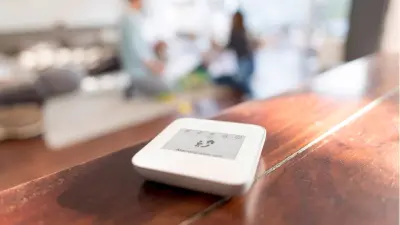Success factor: development
In Ludwigsburg, Germany, a motley crew is working on the future of parking

Parking garage operators and shopping centers, car sharing and car rental companies — connected parking is bringing Bosch into contact with entirely new customer segments.
In the “Connected Parking” project, Bosch is developing and testing three products in parallel, all of them aimed at solving the major challenges posed by parking. In community-based parking (CBP), vehicles detect vacant parking spaces as they drive past, and make this information available to other drivers via the cloud. And in automated valet parking, vehicles maneuver their way through parking garages independently.
To make successful inroads into this world of digital services, Bosch has developed unusual business models. For instance, customers are involved right from the start in making the basic idea a reality: "Existing physical technology is combined with digital Bosch technology, connected to the internet, and developed into new services that fulfill customer wishes", says Jürgen Auracher, the head of sales and marketing for connected parking at Bosch.


This new focus on complementary services also means that the development team has an unusual composition. Associates from Chassis Systems Control, Car Multimedia, Bosch Software Innovations, the Data Mining Lab, and corporate research are collaborating on certain subprojects. “We've never had teams like this,” says Gerrit Quast, who is responsible for automated valet parking. “It's truly the result of a digital transformation.” How? “We are changing our business model as well as the nature of our collaboration, and we're also modifying the technology. This lets us reach new customer segments.”
FAQ about connected parking
With community-based parking, Bosch is introducing a product that requires expertise from various Bosch divisions. Obviously, it calls for competence in vehicle sensors, and data processing and communications technology are equally important. In CbP, these and even more areas come together to create an interdisciplinary team under the umbrella of the Connected Parking unit. Its associates are spread over five different locations throughout Germany – there is even an office in Silicon Valley.
The car-sharing business in particular is frantically searching for new offerings that can win customers and put car sharing on an even firmer footing. Automated valet parking offers car sharing users a way to have cars delivered to their door, and makes returning them easier. The result is no more long distances to walk, and no long waiting times.
Parking is one of the most tiresome aspects of driving. The connected parking team creates extra benefit for drivers and enables automakers to offer truly relevant services to their customers, using existing vehicle technology (such as ultrasonic sensors, electrical steering, etc.) and without having to invest much in development. It makes parking easier. Besides increasing customer loyalty, it's also a way to for automakers to introduce new business models.
Summary
In Ludwigsburg, Germany, developers from disparate Bosch units are working together to make parking difficulties a thing of the past. This brings them into contact with completely new customers.





